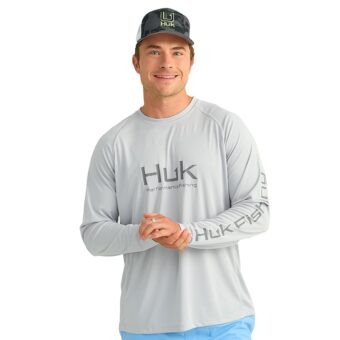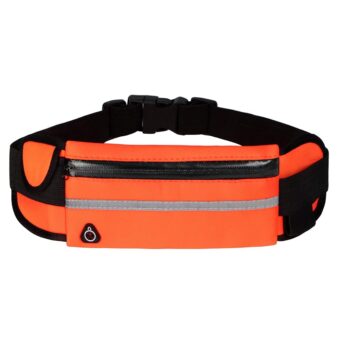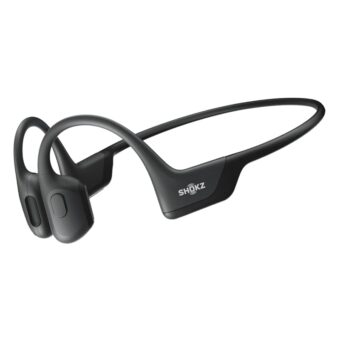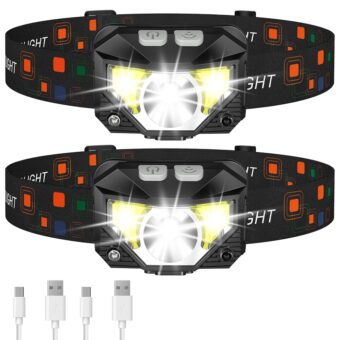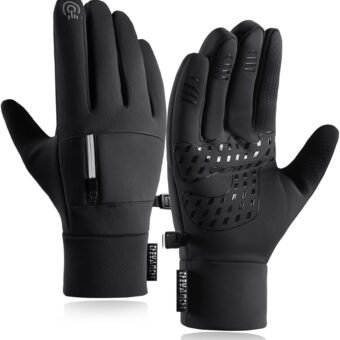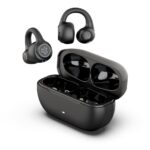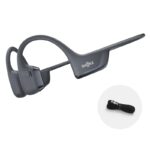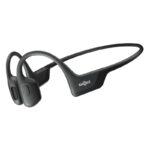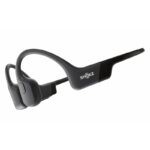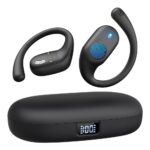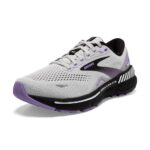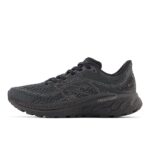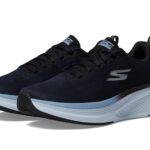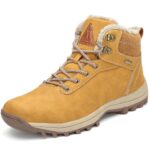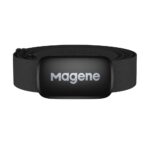Choosing the right running shoes can be a game-changer, especially for runners with flat feet. The best running shoes for flat feet offer more than just comfort; they provide essential support and stability that help you stay active without the worry of injury. When you select footwear designed specifically for your foot type, you set yourself up for improved performance and a better overall running experience.
Flat-footed runners often face unique challenges. Without proper arch support, discomfort can quickly turn into pain, limiting your time on the track or trail. Yet, the right pair of running shoes for flat feet can transform your workouts. They enhance cushioning to absorb shock and deliver stability throughout every stride. In this article, we’ll explore the top options available today, guiding you through key features to look for and how they can make all the difference in keeping you healthy and motivated on your fitness journey. Keep reading to discover how to protect your feet while achieving your running goals!
Understanding Flat Feet
Flat feet, also known as fallen arches, occur when the arches of the foot collapse and come into direct contact with the ground. This condition can be present at birth or develop over time due to factors like age, injury, or excessive weight. Individuals with flat feet typically exhibit a lower or absent arch, which can lead to an uneven distribution of body weight across the foot. As a result, it’s essential for flat-footed runners to select appropriate footwear that provides necessary support and cushioning.
Without proper arch support shoes, flat-footed runners may encounter a range of issues when running or participating in other physical activities. One common problem is overpronation, where the foot rolls inward excessively during movement. This motion can strain ligaments and tendons in the foot, resulting in discomfort and potential injuries such as plantar fasciitis and Achilles tendonitis. Furthermore, flat-footed individuals may experience misalignment in their knees and hips due to altered gait mechanics. Such misalignments not only affect overall performance but may also increase fatigue during workouts.
Runners with flat feet often report chronic pain in their soles, heels, or even their calves after long runs. These discomforts stem from the lack of adequate support that usually cushions high-impact forces while running on hard surfaces. Standard athletic shoes might not provide sufficient stability for those who are flat-footed; therefore, finding the best running shoes for flat feet becomes crucial for both comfort and injury prevention. Investing in well-designed shoes that cater specifically to this condition can make all the difference between an enjoyable run and dealing with ongoing pain.
For those looking to improve their running experience while managing flat feet, understanding these characteristics is imperative. The right selection of footwear serves not just as a preventive measure against injury but also enhances overall performance by allowing athletes to focus on their training without constant distractions caused by discomfort or pain. With thoughtful consideration of fit and features specific to their needs—like superior cushioning and extensive arch support—flat-footed runners can truly elevate their game on any terrain.
Key Features to Look For
When selecting running shoes for flat feet, certain features become paramount due to the unique needs of flat-footed runners. One of the most critical aspects is adequate arch support. Flat feet often lead to overpronation, a condition where the foot rolls inward excessively during running. This overpronation can cause instability and discomfort, making it essential to find footwear that provides firm arch support. Shoes specifically designed with elevated arches help redistribute pressure evenly across the foot, promoting better alignment and contributing significantly to a stable running experience.
Cushioning is another vital feature for runners with flat feet. Proper shock absorption reduces the impact on joints during each stride, providing both comfort and protection against injuries such as shin splints or joint pain. Runners should look for shoes utilizing advanced cushioning technologies like EVA foam or gel inserts that offer optimal bounce-back and flexibility while dampening vibrations upon landing. A well-cushioned shoe not only enhances the comfort level but also allows flat-footed runners to maintain their form even after prolonged wear, enabling longer training sessions without fatigue.
Equally important is overall stability in running shoes, as it has a direct effect on gait and long-term comfort. A supportive heel counter and a firmer midsole can prevent excessive rolling of the foot during motion, which is especially beneficial for those dealing with overpronation issues. Stability shoes offer a structured design that helps guide your steps efficiently; this becomes crucial during runs where maintaining proper posture directly correlates with performance outcomes. Choosing products equipped with stability features ensures that flat-footed runners can experience enhanced traction and control throughout their workouts, ultimately resulting in improved speed and endurance.
By focusing on these key elements—arch support, cushioning, and stability—flat-footed runners are well-positioned to select footwear tailored to their specific needs. Doing so not only promotes injury prevention but also elevates overall performance, allowing enthusiasts at any level to pursue their fitness goals confidently and effectively.
Top Running Shoe Brands for Flat Feet
When searching for the best running shoes for flat feet, the right brand can make a significant difference in comfort and performance. Many footwear brands have recognized the unique needs of flat-footed runners and developed shoes that provide exceptional support and stability. Two of the most notable brands are ASICS and Brooks. ASICS has made a name for itself with its Gel-Kayano series, which combines excellent arch support with cushioned soles to absorb impact effectively. These stability running shoes feature dynamic Duomax technology that helps to reduce overpronation, making them particularly beneficial for those with flatter arches.
Brooks is another brand renowned for creating supportive footwear tailored specifically for flat-footed runners. Their Adrenaline GTS line is exceptionally popular due to its balanced cushioning and holistic support system, designed to help maintain proper alignment during runs. The GuideRails feature not only provides additional midsole guidance but also protects against knee injuries by limiting excess motion—ideal for flat-footed athletes who may struggle with stability while running.
Other noteworthy brands include New Balance and Saucony, both of which emphasize comfort and customizability in their designs. New Balance’s 860 series focuses on delivering strong support without sacrificing breathability—a vital factor when jogging longer distances. Meanwhile, Saucony offers models like the Guide ISO that integrates their PWRFOAM technology; this ensures sufficient shock absorption while keeping weight low, presenting an appealing option for spirited runners looking to improve race times without compromising on comfort.
Ultimately, choosing from these established brands enables flat-footed runners to find suitable options tailored to their personal preferences—from plush cushioning to optimal arch support. As you explore your choices among the best running shoes for flat feet available today, consider how each brand’s specific features align with your unique running style and goals.
Best Running Shoes for Daily Training
When it comes to daily training for flat-footed runners, durability and comfort are paramount. One standout option is the ASICS Gel-Kayano series, which is renowned for its effective combination of arch support and cushioning technology. The GEL cushioning system absorbs shock during impact, allowing for a smooth heel-to-toe transition that minimizes strain on flat arches. Additionally, the Dynamic DuoMax support system enhances stability without sacrificing flexibility, making it an excellent choice for those who log miles regularly.
Another notable contender in this category is the New Balance Fresh Foam 860. This shoe boasts a plush yet supportive midsole made from Fresh Foam that provides exceptional cushioning while maintaining adequate medial support to prevent overpronation common among flat-footed runners. With a well-structured upper and durable outsole designed for traction across different terrains, the Fresh Foam 860 easily accommodates both road runs and treadmill sessions alike.
The Brooks Adrenaline GTS series also deserves mention; known for its versatility and reliable performance features, it delivers superior comfort through DNA LOFT cushioning technology. This dynamic adaptation allows the shoes to react to your stride while providing maximum softness underfoot. The Guiderail holistic support system helps keep excess movement in check without hindering natural motion, ensuring that you stay comfortable throughout your lengthy training runs.
Investing in these cushioning running shoes ultimately supports not just your athletic endeavors but promotes overall foot health as well. Runners with flat feet should prioritize finding footwear that combines durability with cutting-edge technologies specifically designed to address their unique needs—ensuring every run feels good from start to finish!
Best Racing Shoes for Performance
Finding the best racing shoes for flat feet is crucial for runners who seek to achieve their personal best in performance without compromising on comfort. Lightweight options are particularly designed to maximize speed while still providing necessary support. These shoes often incorporate advanced materials and technologies that minimize weight, allowing runners to feel quicker and more agile. For instance, brands like Saucony and New Balance have models such as the Saucony Endorphin Speed and the New Balance FuelCell RC Elite, which feature responsive cushioning systems that deliver a springy bounce while maintaining stability essential for flat-footed athletes.
The balance of support with agility in racing shoes is vital—not only does it facilitate optimal running mechanics, but it also aids in injury prevention. Without adequate arch support, flat-footed runners can suffer from overpronation, leading to conditions such as plantar fasciitis or shin splints. Models equipped with multi-density foams or rigid heel counters can provide targeted support where it’s needed most. This allows runners to focus on their pace rather than worrying about foot discomfort or potential injuries during a race.
Moreover, lightweight racing shoes typically come with breathable mesh uppers that enhance ventilation—keeping feet cool even during high-intensity runs. Brands like Asics and Hoka One One offer options like the Asics Gel-DS Trainer or Hoka Carbon X that strategically integrate these features without sacrificing durability. Such innovations not only help flat-footed runners maintain speed but also ensure they don’t overheat under race conditions.
In summary, when selecting racing shoes specifically tailored for flat feet, look for those lightweight designs that emphasize both speed and proper support. Prioritizing this balance allows you to compete effectively while minimizing your risk of injury—a win-win scenario for any athlete striving to improve their race times!
Budget-Friendly Options
For those who are flat-footed, finding running shoes that provide the necessary support doesn’t always have to break the bank. Many brands have recognized the need for quality footwear that caters specifically to flat arches while keeping prices competitive. Some excellent options include models like the Asics Gel-Venture 8 and New Balance Fresh Foam Arishi v3. Both of these sneakers offer a blend of required attributes such as arch support, cushioning, and breathability without the hefty price tag associated with high-end models.
While budget-friendly running shoes can meet essential needs, there are both pros and cons to consider when opting for lower-priced options. On one hand, these shoes often feature simplified design technologies which can make them lighter and more adaptable for casual runners or joggers. However, it’s essential to note that some cheaper models might compromise on materials or durability, meaning they may not perform well over time or last through extensive training sessions.
Additionally, although many affordable running shoes boast decent features for flat feet, it is crucial to do thorough research before making a purchase. Reviews from other flat-footed runners can help identify whether a particular model stands up to their promises in terms of support and comfort. For example, while looking for the best sneakers for flat arches within a budget range, buyers should look out for customer feedback specifically discussing ankle support and how well the shoe holds up after prolonged use.
Ultimately, investing in budget-friendly running shoes designed for flat feet isn’t just about saving money; it’s about balancing value with performance. With thoughtful selection based on user reviews and characteristics tailored to your unique foot shape, you can find an economical yet effective solution that still supports your journey toward improved fitness and overall health.
Tips for Trying on Running Shoes
Finding the best running shoes for flat feet is a pivotal step in ensuring both comfort and performance while you’re on the move. When it comes to trying on shoes, there are some key practices you should follow to guarantee that you get a perfect fit. First, make sure to try on running shoes later in the day when your feet are slightly swollen; this mimics real conditions during a run. Wearing the same type of socks that you plan to run in can also assist in achieving a more accurate fit. A well-fitted shoe will provide ample space at the front, allowing about half an inch between your longest toe and the end of the shoe.
After slipping them on, don’t just stand still—test those comfortable running shoes out by walking or jogging around the store. This movement helps you assess how they feel in action rather than simply when stationary. Pay attention to any areas of tightness or discomfort during these movements; remember, if you feel pressure points or pinching from beginning, it’s unlikely they’ll improve with wear. It’s beneficial to push off your toes as you jog lightly and gauge whether your heel stays securely in place without slipping — something crucial for flat-footed runners who need that extra support.
Another important aspect is assessing stability underfoot. Wiggle your toes; there should be enough room to move without feeling cramped. Flat-footed runners often require additional arch support, so take note of how the shoe feels around this critical area when moving. If possible, use an incline ramp available at larger stores; this simulates uphill runs and gives better insights into how shoes perform across various terrains.
Lastly, don’t rush through this process: take your time! Comfort and functionality are vital with every step of choosing running shoes designed specifically for flat feet. Remembering these tips not only improves your chances of finding the right footwear but also keeps injuries at bay—ensuring long-term enjoyment during your runs!
Maintaining Your Running Shoes
Proper maintenance of your running shoes is crucial, especially for flat-footed runners who depend on stable and supportive footwear to perform at their best. To extend the life of your shoes, always ensure they are cleaned regularly. After each run, wipe off any debris or mud from the uppers and soles using a damp cloth. If you find your shoes particularly dirty, remove the insoles and wash them separately; just remember to air-dry them rather than placing them in direct sunlight or a dryer, as excessive heat can damage the materials.
Another effective way to maintain your top-rated flat foot shoes is to rotate between two pairs if possible. Having multiple pairs allows each pair time to decompress after runs, thus preserving their cushioning and support longer by eliminating moisture buildup and reducing wear. Also, be mindful of the running surfaces you frequently use – softer terrains like grass or trails can mitigate impact better than concrete or asphalt.
Recognizing when it’s time to replace your running shoes is just as important as maintaining them. Generally, you should consider replacing your running shoes every 300 to 500 miles, but this varies depending on factors like weight and running style. Pay attention to signs such as noticeable wear patterns on the sole or a decrease in cushioning responsiveness during runs. If you begin experiencing discomfort or pain that wasn’t present prior—perhaps an increase in shin splints or knee pain—it’s likely time for a new pair.
Ultimately, investing in a good-quality shoe designed specifically for flat feet is essential for optimal performance and injury prevention. By caring for these shoes properly and remaining attuned to their performance characteristics over time, you’ll not only get more mileage out of them but also enhance your overall running experience.
Conclusion: Steps Towards Better Running
Choosing the best running shoes for flat feet is essential for anyone who runs. The right footwear provides the support and stability you need. It helps prevent injuries and enhances performance. Flat-footed runners deserve shoes that cater to their unique needs, ensuring a more comfortable running experience.
Investing in suitable footwear is a step towards better health. Take the time to find shoes with proper arch support, cushioning, and stability. Prioritize your wellbeing by selecting the best running shoes for flat feet that fit your lifestyle. You’ll notice the difference in both comfort and performance on your next run!

